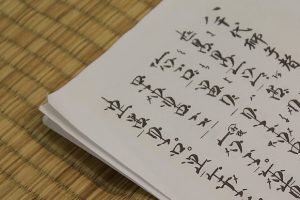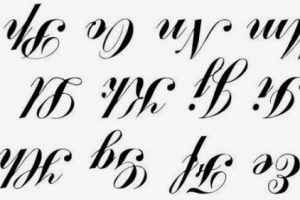Calligraphy is a beautiful and timeless art form that has been practiced for centuries. English calligraphy is a style of calligraphy that has its roots in the medieval period and has evolved over time to become a distinct and recognizable form of art. In this post, we will explore the history, styles, tools, and techniques of English calligraphy.
The History of English Calligraphy
English calligraphy has a long and rich history that can be traced back to the medieval period. During this time, calligraphy was used to create illuminated manuscripts, which were books that were decorated with intricate illustrations and beautiful lettering. These manuscripts were often created by monks who spent years perfecting their calligraphy skills.
In the 15th century, the printing press was invented, which led to a decline in the use of calligraphy for practical purposes. However, calligraphy continued to be practiced as an art form, and English calligraphy evolved to become a distinct style that is still popular today.
The Styles of English Calligraphy
English calligraphy has several different styles, each with its unique characteristics and history. Here are some of the most popular styles:
1. Gothic: Gothic calligraphy is characterized by its bold, angular letters and is often used for titles and headings.
2. Italic: Italic calligraphy is characterized by its flowing, slanted letters and is often used for invitations, certificates, and diplomas.
3. Copperplate: Copperplate calligraphy is characterized by its delicate, flowing letters and is often used for wedding invitations and formal documents.
The Tools of English Calligraphy
English calligraphy requires specialized tools to create the precise and beautiful letters. Here are some of the essential tools for English calligraphy:
1. Pen: A calligraphy pen is designed to hold ink and produce varying widths of strokes, depending on the pressure applied.
2. Ink: Calligraphy ink is usually water-based and comes in a variety of colors.
3. Paper: Calligraphy paper is usually smooth and slightly absorbent to allow the ink to flow smoothly.
The Techniques of English Calligraphy
English calligraphy is a skill that requires practice and patience. Here are some tips for mastering English calligraphy:
1. Hold the pen correctly: Hold the pen at a 45-degree angle to the paper, with your fingers resting lightly on the pen.
2. Practice strokes: Practice making straight and curved strokes to get a feel for the pen and ink.
3. Practice letters: Start with simple letters and work your way up to more complex ones, practicing each letter until it is perfect.
Conclusion
English calligraphy is a beautiful and timeless art form that can add elegance and personality to any document or project. Whether you are a beginner or an experienced calligrapher, there is always something new to learn and explore in the world of English calligraphy. With the right tools, techniques, and practice, anyone can create stunning calligraphy letters that are both functional and beautiful.









Add Comment